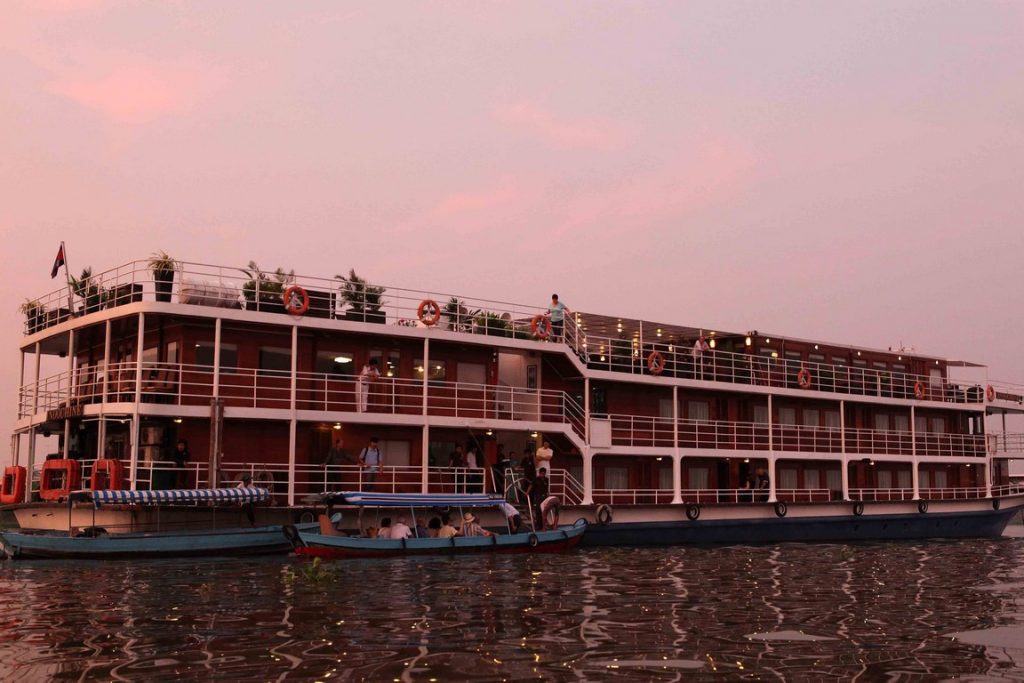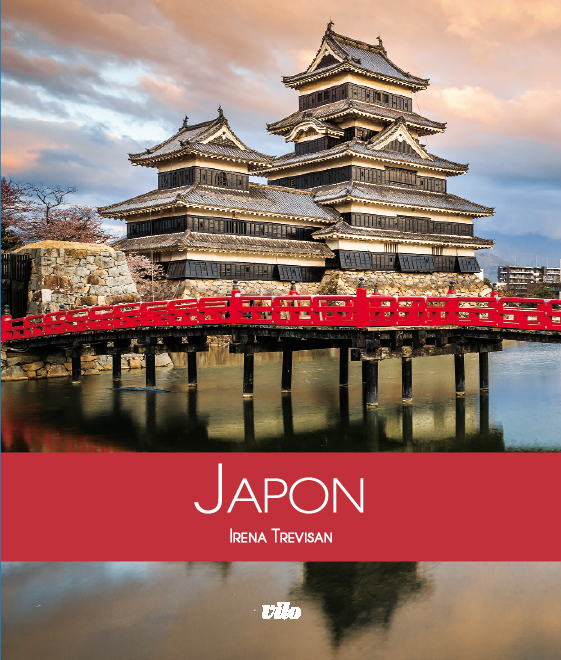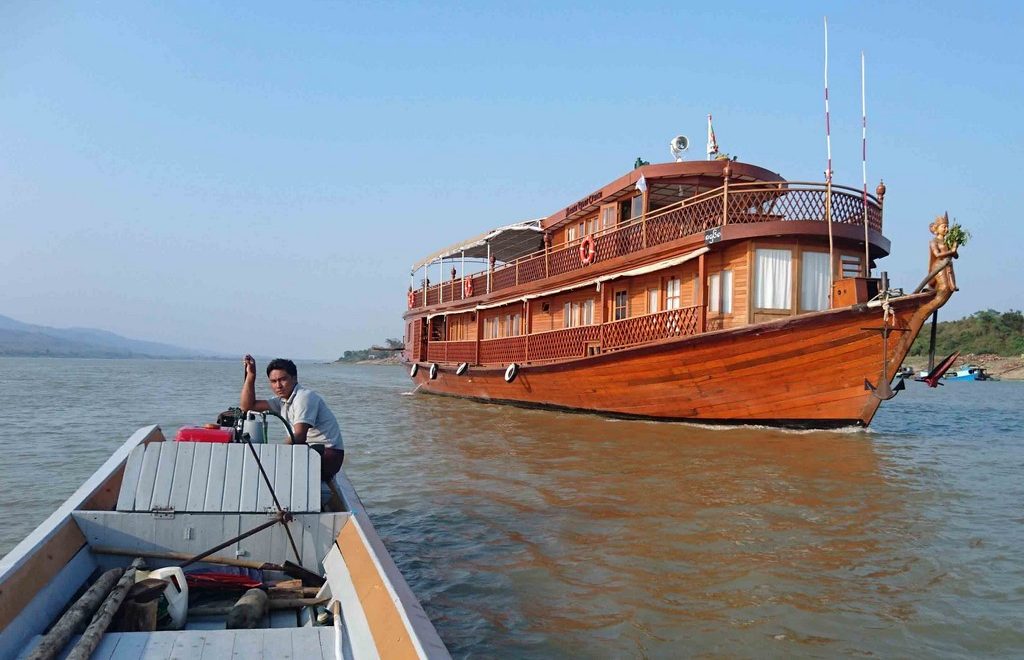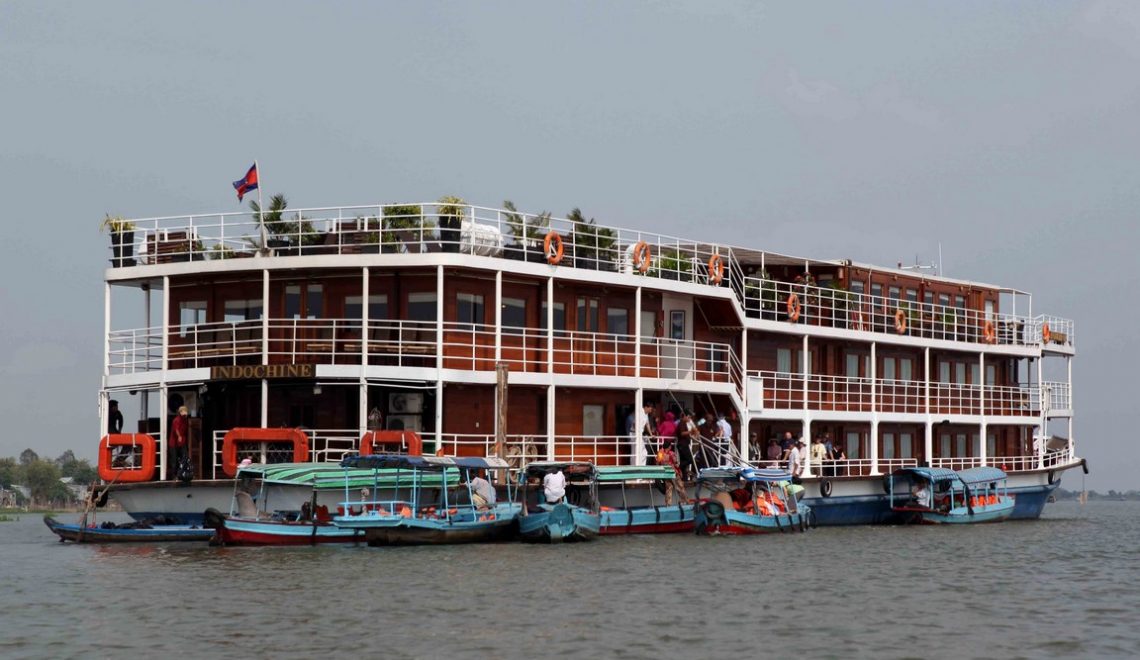
Mekong! The "mother of all waters" for its inhabitants. To get the real measure of it, come aboard the RV Indochine, a charming boat that sails between Hô-Chi-Minh-Ville (the former Saigon) in Vietnam and the Tonlé Sap lake in Cambodia, to the north of which stand the sumptuous temples of Angkor. A 9-day cruise at the slow pace of the river.
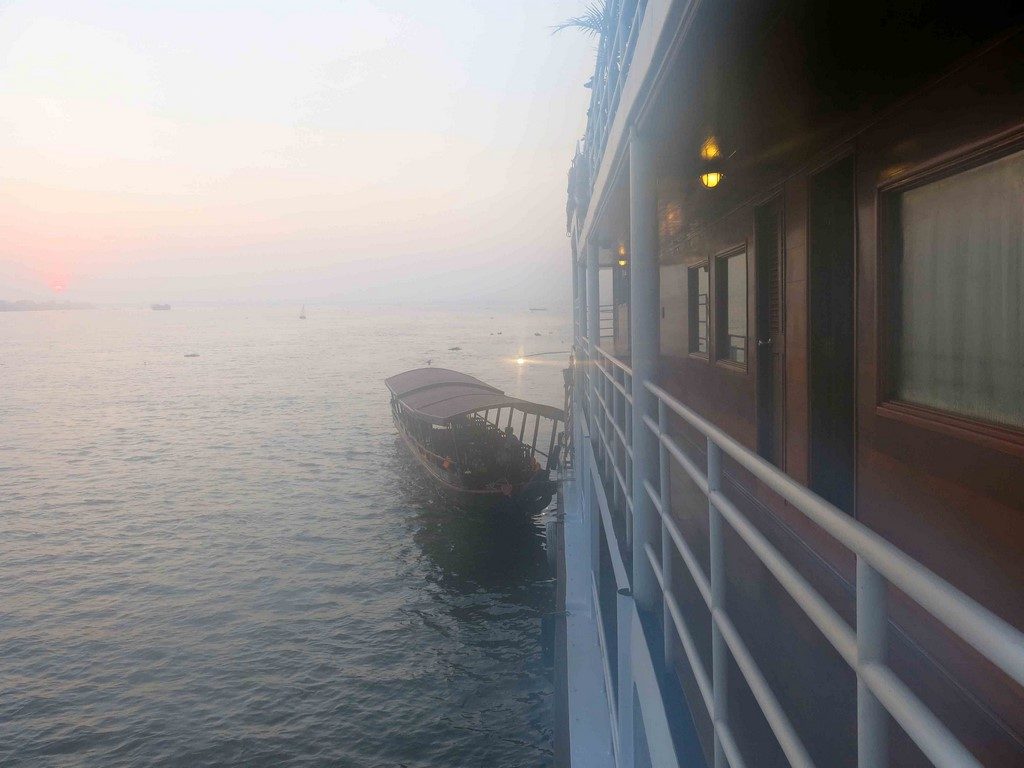 As night falls, the Mekong becomes an impressionist painting.
As night falls, the Mekong becomes an impressionist painting.
Its name rings like the gong of the Buddhist temples that line its banks. From Tibet, where it was born, to Vietnam, where it stretches out in a vast delta with nine arms before disappearing into the China Sea, the Mekong winds its way through 6 countries, shaping landscapes according to the seasons and its beneficent floods. A life-giving artery that fills the shores with its rich alluvial deposits, the Mekong is a nourishing river with timeless landscapes. All the gods and demons of Asia lurk in the magical waves of the "Mother of Rivers", whose genius is venerated by every sailor who paddles her waters. The Naga, the dragon-snake, is said to swim in it. And for any Laotian, Thai, Vietnamese or Cambodian fisherman, it is obvious that the Naga is the master of the place.
Boarding the RV Indochine in Saigon, we are reminded of Patrick Deville and his heroes with soles of wind or Marguerite Duras, whose entire work is linked by this silty cordon that seems to reach the horizon as soon as our ship glides over its waters. Duras and her mother, who told her that "never in her whole life would she see rivers as beautiful, as big, as wild as the Mekong and its arms".
The river of nine dragons
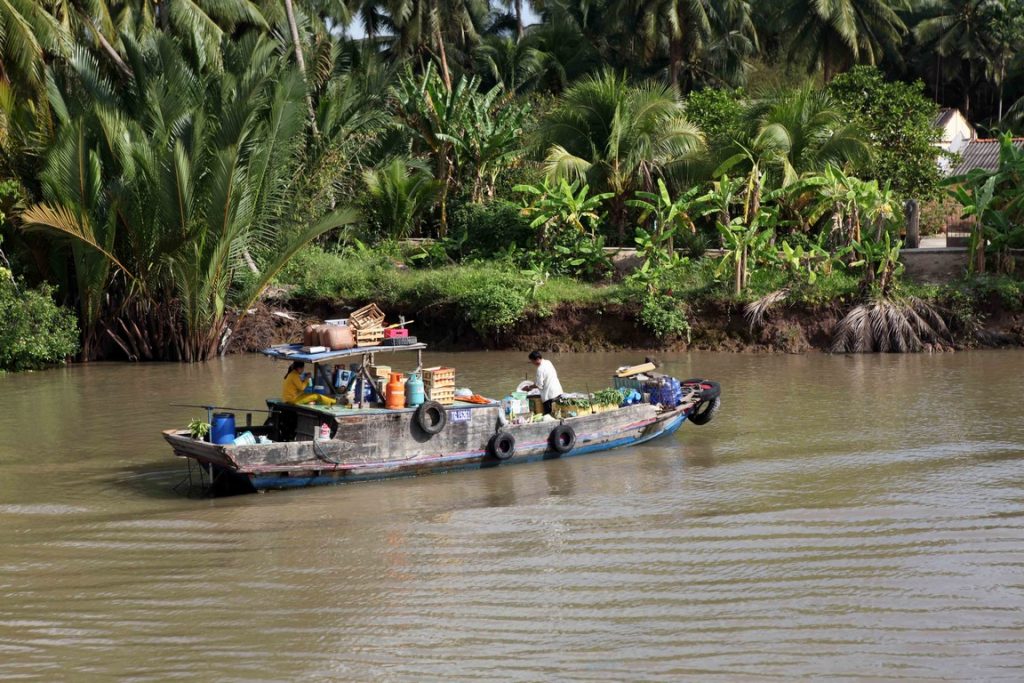 The shops are floating, moving from house to house and boat to boat.
The shops are floating, moving from house to house and boat to boat.
Leaving the Saigon River - a loop of the Mekong - via the Chao Gao canal, our boat slowly makes its way towards the Delta, the "garden of Cochinchina" in colonial times as it is today. A veritable rice granary covering 40,000 km², the delta stretches between the nine branches of the Mekong, known here as Song Cuu Long or the "River of Nine Dragons". In this labyrinth of canals, water and dirt paths, rice paddies and marshes, almost 20 million people live, often meagrely, always in symbiosis with their master. Despite heavy farming, much of the delta is still wild and a sanctuary for biodiversity. But for how long? Over-exploitation of the forest, upstream dams (twelve hydroelectric projects are planned between Laos and Cambodia) and industrial waste are a very real threat to this fragile giant.
Leaning against the rail of the RV Indochine, we plunge into an almost mysterious world, a shifting territory where the banks of the river diverge to melt into the waves. The navigation is slow and leaves us with a point of view right on the water, with infinite modulations of light depending on the time of day. The water where, in the evening, the opal reflections of the pearly skies break up. At sunset, the warm, damp earth exhales the scent of frangipani. You can contemplate the lush orchards, the floating villages or villages on stilts that protect their inhabitants from the rising waters, the fishermen on their sampans, the boats that cross in all directions. Activity is perpetual for this people of the water, who get up very early and breathe with the river. Traders to the core, the Vietnamese criss-cross the river from dawn to reach the many markets that line it.
A river landscape
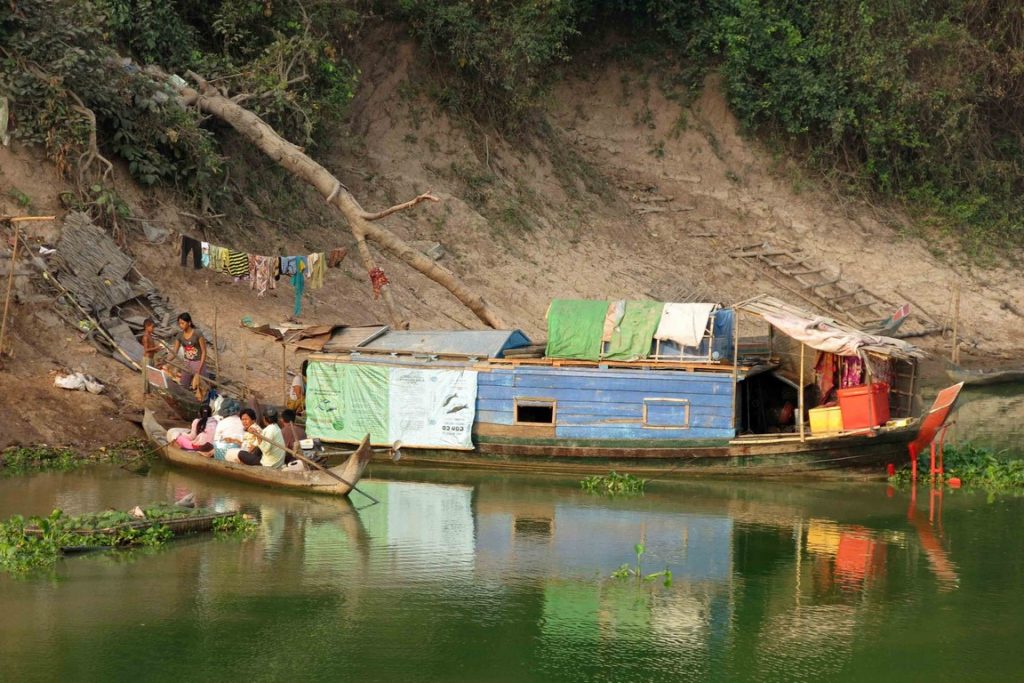 As we sail along, we discover the simple life of the local people.
As we sail along, we discover the simple life of the local people.
The boatwomen transport their cargo on overcrowded boats, the women do the washing on the banks while the children take a dip in the silt-laden waters. Here, life is a long river... with its own rhythm. At once nonchalant and restless, sometimes fiery during the monsoon floods, never tranquil. Whether nature is benevolent or devastating, it always reclaims its rights. That's why the Mekong commands the respect of those who live alongside it. The fishermen and merchants who ply its waters every day are well aware of this, as they paint two large ones on their boats to ward off bad luck and ward off the evil eye.
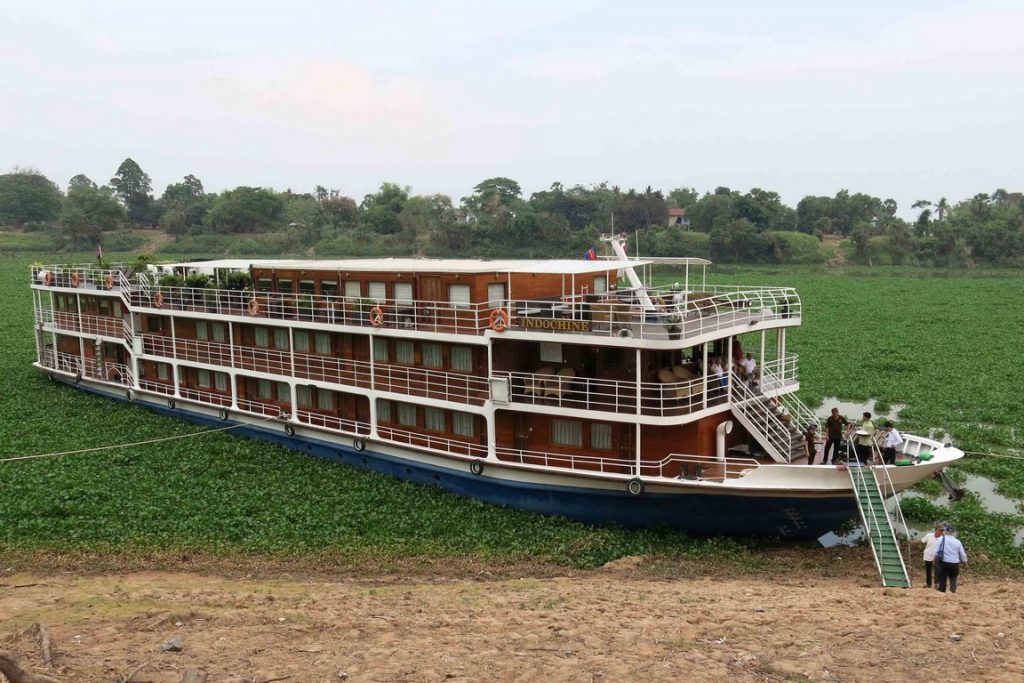 Islets of water hyacinths drift along the water and cluster around our boat at the slightest anchorage, giving the impression that our vessel has landed in the middle of a garden.
Islets of water hyacinths drift along the water and cluster around our boat at the slightest anchorage, giving the impression that our vessel has landed in the middle of a garden.
Water hyacinths are invasive plants that purify the water in canals and rivers, but they cause problems for small boats that get their propellers caught in these aquatic lianas. Each time we leave these "green moorings", the mate gives instructions to the crew, who manoeuvre delicately to free the propeller from these reefs.
We stop off at My Tho, one of the poorest towns in the delta, famous for its church and lake market. A few colonial buildings, rather poorly maintained, are a reminder of the French presence here and there.
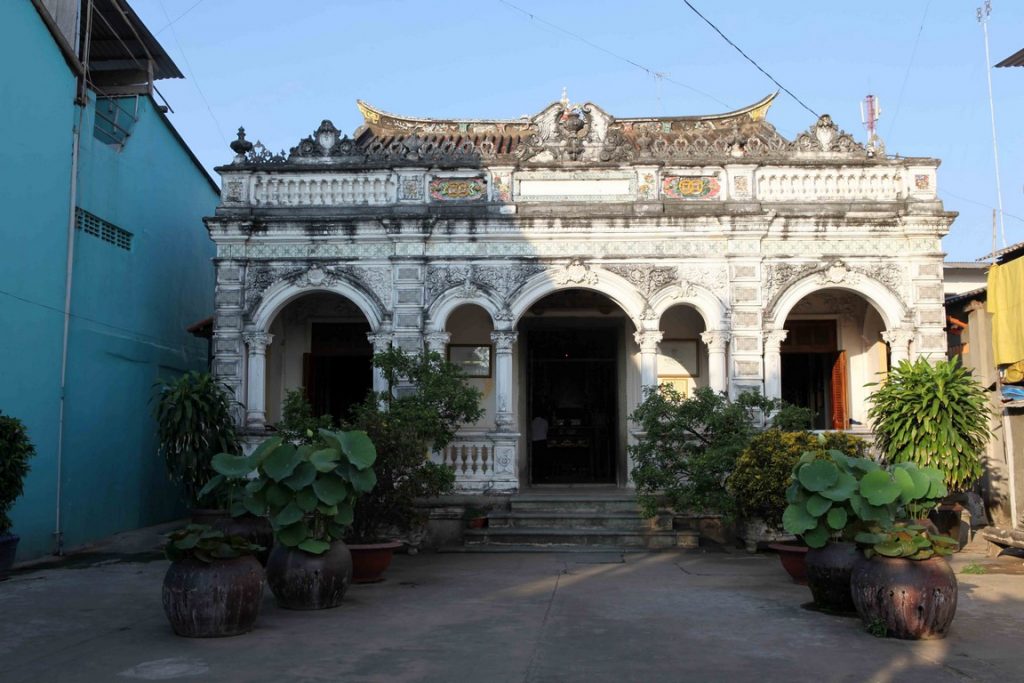 The house of Marguerite Duras's lover in her novel of the same name was designated a "national historic site" by the Vietnamese authorities in 2010.
The house of Marguerite Duras's lover in her novel of the same name was designated a "national historic site" by the Vietnamese authorities in 2010.
Nostalgia for a time that left its mark, as in Sa Dec, where we visit one of the houses of Huyn Thuy Lê, the wealthy Chinese merchant with whom Marguerite Duras had an affair, and who became the subject of her autobiographical novel L?Amant.
A grid of rice paddies
 We set off on small boats through the aroyos to visit Cai Be.
We set off on small boats through the aroyos to visit Cai Be.
 The daily excursions are an opportunity to discover the markets, where stalls abound with foods that are unusual for our palates.
The daily excursions are an opportunity to discover the markets, where stalls abound with foods that are unusual for our palates.
Dried seahorses, eggs incubated for eleven days, snake wine, skinned water rats? You'll find just about anything that can be eaten by a picky eater. Strolling through the villages, you are quickly taken by the kindness of the inhabitants, the rural atmosphere of the hamlets and the hospitality of the Cham fishermen in Chau Doc. Fortunately, neither war nor isolation has destroyed the soul of this proud, courageous and welcoming people.
As you approach Chau Doc, the border town between Vietnam and Cambodia, the fish farms invade the waters. Situated at the heart of a gigantic grid of rice paddies, this city hugs the banks of the Mekong, which is as wide here as a river mouth.
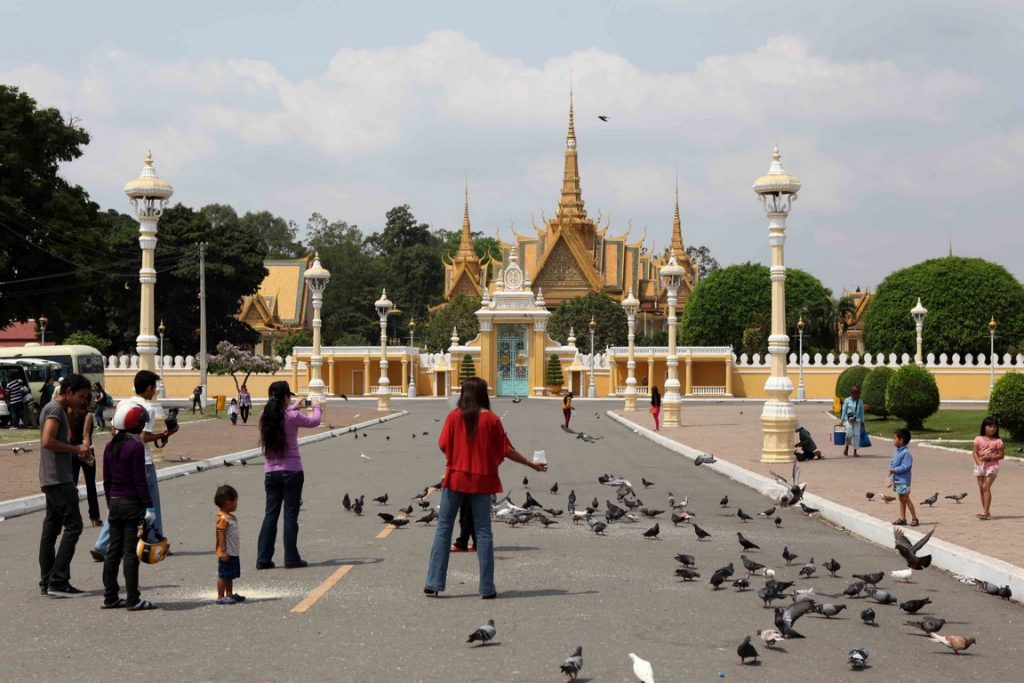 Royal Palace in Phnom Penh, home to the royal family.
Royal Palace in Phnom Penh, home to the royal family.
A full day's sailing then takes us to Phnom Penh. Cambodia's capital, martyred by the Khmer Rouge, has retained its French charm, with its old colonial architecture and lively streets.
Arriving at Lake Tonle Sap, the excitement disappears. We cross this immense inland sea, the largest freshwater lake in South-East Asia and Cambodia's economic lifeblood (it produces 60% of the country's fish, or 300,000 tonnes). During the monsoon season, the waters of the Mekong flow into the Tonle Sap river, whose course reverses, releasing the waters into the immense lake of the same name, whose surface area quadruples at this time (from 2,600 to 10,000 km²). When the dry season arrives in autumn, the movement is reversed. This is when the riels (eels that have given their name to Cambodia's national currency) arrive every year, and Cambodians celebrate the cycle of life at a major national festival in November (note that navigation on the lake is impossible in the dry season).
The majestic site of Angkor
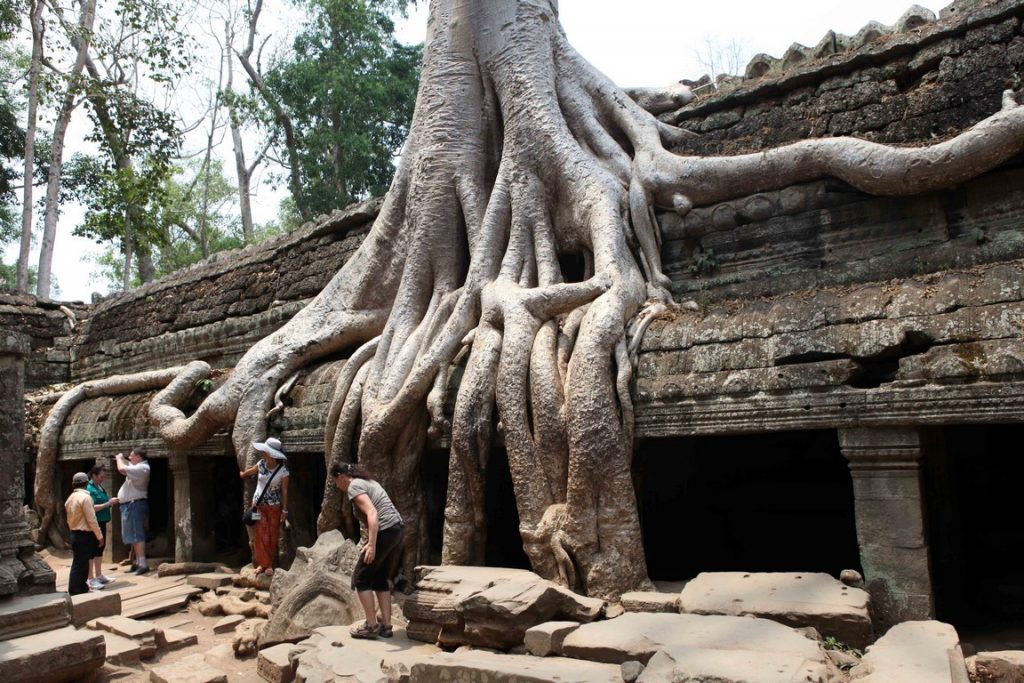 At Ta Prohm, the plant meets the mineral.
At Ta Prohm, the plant meets the mineral.
Then, the apotheosis of the journey, we reach Siem Reap and the Angkor site, where the magic of the plant and mineral universe permeates the vestiges of Khmer civilisation: Angkor Wat and its superb bas-reliefs depicting thousands of apsaras, the royal city of Angkor Thom, a vast architectural complex entered through five monumental gates, with its centrepiece the temple-mountain of Bayon, famous for its Buddha faces.Angkor Vat and its superb bas-reliefs depicting thousands of apsaras, the royal city of Angkor Thom, a vast architectural complex accessed through five monumental gates, with the Bayon temple-mountain at its centre, famous for its 172 Buddha faces with their enigmatic smiles, and Ta Prohm, whose buildings are overgrown with banyan roots. Not forgetting one of the most romantic temples in this immense city: Benteay Srei, the "Citadel of the Women", stone lacework covered with bas-reliefs carved in pink sandstone.
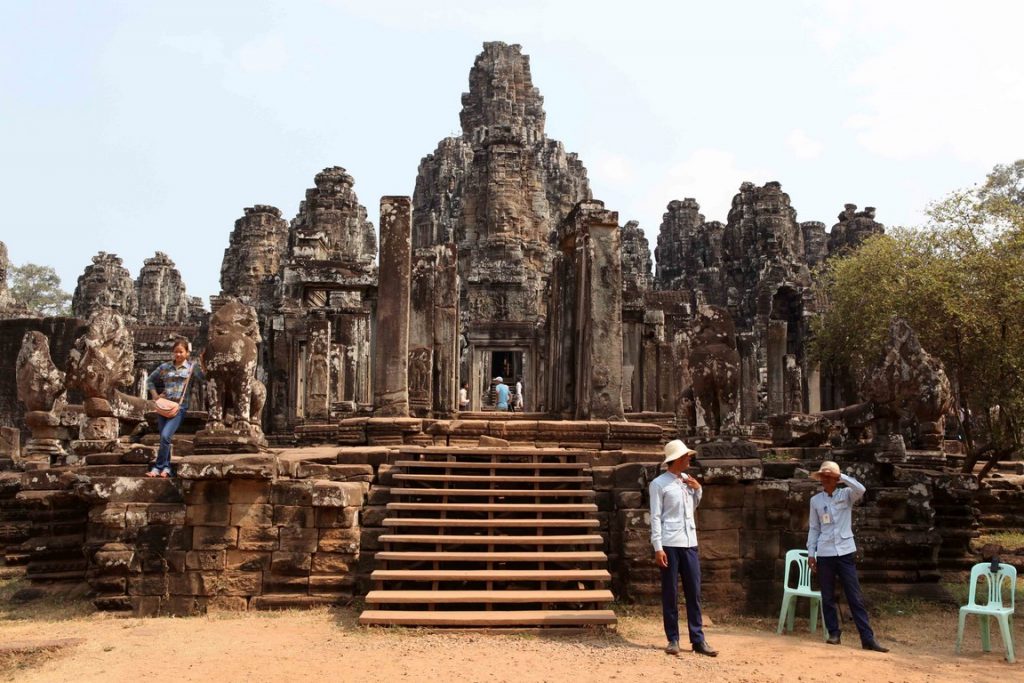 At Bayon, the central temple of the ancient city of Angkor Thom, the faces are all enigmatic smiles.
At Bayon, the central temple of the ancient city of Angkor Thom, the faces are all enigmatic smiles.
Text and photos: Brigitte Postel
Getting there
CroisiEurope offers a 13-day cruise from the temples of Angkor to the Mekong Delta. From €3,250 per person for the twelve-day trip, all inclusive from Paris (tel.: 0 826 101 234) and from the Mekong Delta (tel.: 0 826 101 234). http://www.croisieurope.com/croisiere-d-exception/mekong
Possible extension to Hanoi and Along Bay from ?965 for 4 days.
A colonial-style boat
The RV Indochine combines charm and comfort, with a metal hull and exotic wood panelling. It has 24 spacious double cabins (16 m²) with en suite shower rooms and large picture windows. On board, well-being and the art of living are the watchwords: massage, refined and varied cuisine, talks by specialist speakers on cultural and historical subjects, and films related to the destination. The Cambodian crew provide attentive service. A French-speaking cruise director and purser are the privileged contacts for passengers. The open-air upper deck caters for all tastes, as does the bar. There is a communal dining room, an enclosed lounge with a bar (modest prices), a big screen TV, comfortable armchairs and air conditioning. Numerous guided tours are planned throughout the cruise: visits to pagodas, markets, villages, temples? Once you leave the boat for your daily excursions, you'll never want to get back on board to continue your daydreams along the water.

